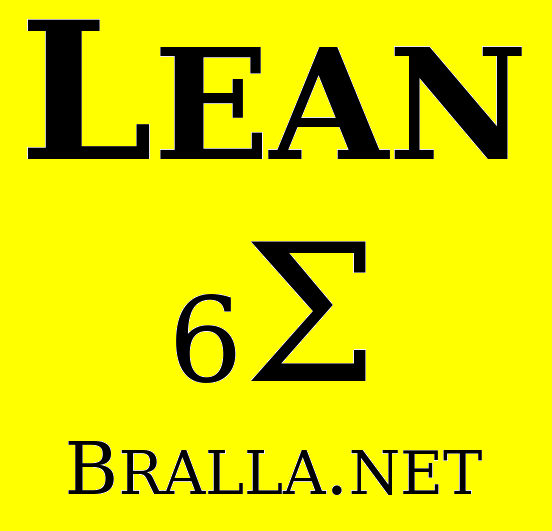
www.Bralla.net

377 Farmview Drive
East Earl, PA 17519
610-810-7716
Exquisitely simple
Maddeningly complex
Essential for Survival!

|
J. R. Casey Bralla www.Bralla.net  377 Farmview Drive East Earl, PA 17519 610-810-7716 |
"Lean Manufacturing" Exquisitely simple Maddeningly complex Essential for Survival! |
Get Help
Lean Topics
Vocabulary
Reading
Site Hosted by
Vorlon Information Technologies

Entire site Copyright © 2012 by J. R. Casey Bralla
(except for obvious external works).
All rights reserved.
NOTE: If you link to this site, or otherwise find it useful, please send a brief note to the author. Thank you!
5S is the single most critical component of Lean Manufacturing. If you do nothing else for Lean, do 5S. All the lean disciplines flow from 5S, and without a solid 5S foundation, all the lean activities you implement will slowly wither away.
5S refers to 5 Japanese words that begin with the "S" sound. The English equivalents are "Sort", "Set in order", "Shine", "Standardize", and "Sustain".
5S always starts with cleaning up and painting lines on the floor, and many people therefore think that 5S is "cleaning up", but it is much much more. The most important part of 5S is the "Standardization" that allows for all future improvements.
A complete PowerPoint training presentation for 5S can be found in our Training & Download page.
 (Click on Image to play video)
(Click on Image to play video)
Have you ever been looking for a spare part to a machine that just went down, and you know that you have it, but you can't find it?
We want a well 5S'd operation for many reasons. The most important reason is that it helps us be more efficient and reduces the total waste. Imagine that you are trying to find the alien hiding in your kid's closet, but you can't because he's got too many stuffed toys. The same thing happens when you are looking for that important spare part that will get your important machine back to work. 5S saves us money.
The first step to 5S is to get rid of things that should not be present in the work area. If you're keeping things around because you think they may someday be useful, think again. In a well 5S'd world, only those items which are used on a regular basis should be nearby.
Things which are used less often should be stored far away, while things that are used frequently should be very close. For example, the screw driver you use every 5 minutes should be stored on a hook on your belt, while the special calibration fixture which you use once a year should be labeled and stored in a distant warehouse.
If you haven't used it for 30 days...
and you don't know when you will use it again...
Remove it!
But wait! What if you find out next week you needed the thing you just threw away? This is going to happen: You'll do a major 5S, and throw away a ton of old stuff, and then someone (usually the boss) will irately demand to know why you threw away the item he's signing a purchase requisition for. The short answer is that it's worth it to buy back the 5% of what you threw away to clear out the 95% you don't need. Also, we use a "Red Tag" system to give everybody a chance to see and claim what we feel we don't need.
Don't let the packrats rule! "When in doubt, throw it out!"
"A Place for everything, and everything in its place."
Once you've gotten rid of stuff you don't need, you need to put the stuff you want where you want it. Don't get hung up finding the "perfect" place; the most important thing is to pick a specific place and then use it. (You will almost certainly will find a new, better place sometime in the future.)
As you select places for items in the workplace, keep in mind the rules about frequently used items being close, and infrequently used items being far away.
Many people mistake 5S for a "housekeeping" program. A well 5S'd plant is clean, but not simply because it's nicer to work in a clean environment. We clean to inspect our equipment. Things like oil leaks, worn bearings, loose fasteners, etc are much easier to find when the equipment is regularly cleaned.
As someone wipes down a machine, their eye is forced to look at the machine. They therefore have a much better chance of finding something that has just gone wrong.
This is the heart of 5S. A process which is not performed the same way every time is out of control, and more importantly, is not improvable. Standardization requires that things be labeled, work instructions be posted, and that associates working in an area follow all follow the same standard method.
Its perfectly acceptable to change a process, but the newly changed process has to become the new standard.
The hardest of the S's. Sustain requires constant vigilance. The best way to sustain 5S is to make it a regular part of your jobs. Another excellent way is to create a metric for 5S. This metric needs to be publicly posted for all to see.
An example of why 5S is so powerful
I do not know where this picture was taken. (I received it from a trainer several years ago.) This is an excellent example of the power of 5S. The lines and signs in this picture probably took someone about an hour to create and post.
.jpg)
Click on this photo for a larger version.
What do you know about this facility? What safety concerns do you see? What production problems are they facing?
Here is what I and others have seen in this photo. If the lines and signs were not present, we would not have known any of this:
Notice the power of 5S! We know nothing about this factory. We don't know what they make, or have any knowledge of any of their problems. But we can ask good questions and may be able to help improve their safety and performance. All this is due to someone spending an hour on 5S! Wow!